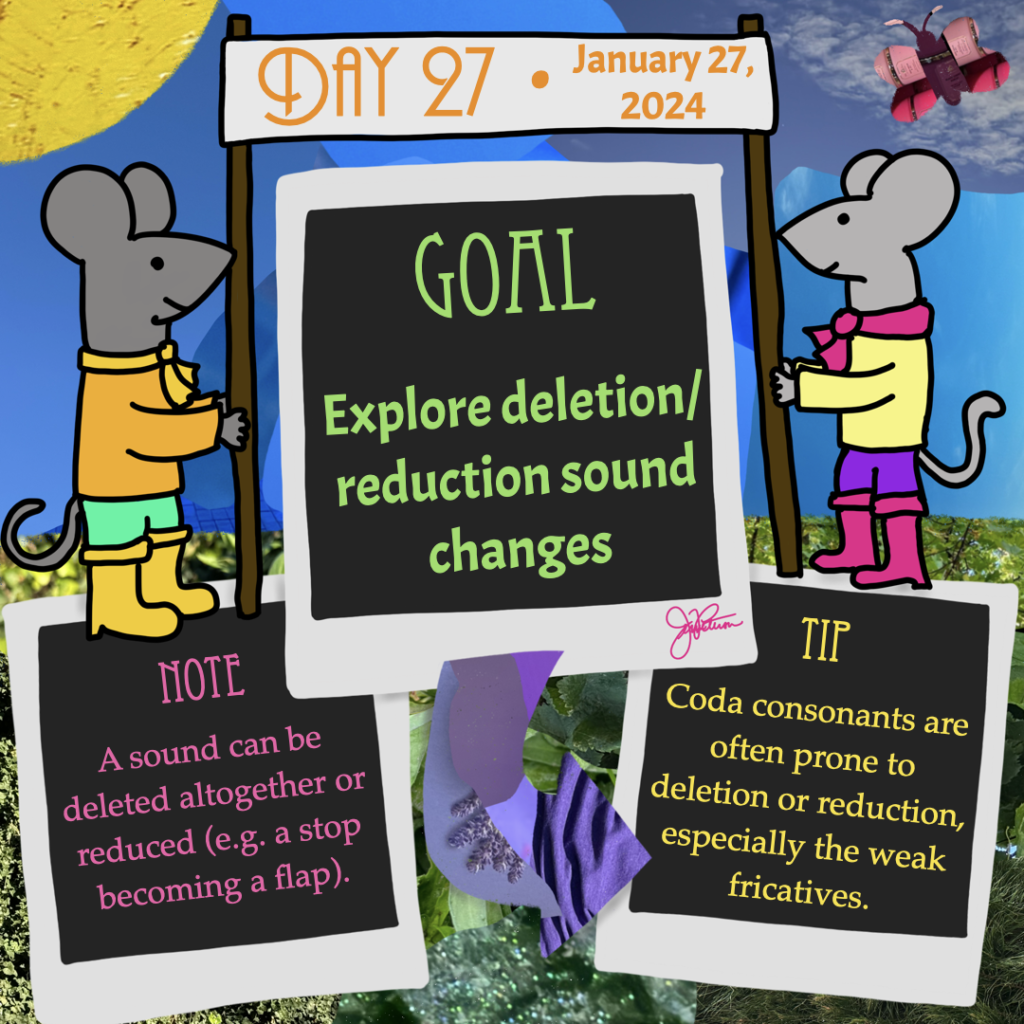
Goal: Explore deletion/reduction sound changes
Note: A sound can be deleted altogether or reduced (e.g. a stop becoming a flap).
Tip: Coda consonants are often prone to deletion or reduction, especially the weak fricatives.
Work focus: Learn/Brainstorm/Try
Some sound changes cause sounds to be reduced or deleted altogether (the ultimate reduction, you might say!). Some example sound changes to get you thinking are provided here:
(example a) Stops shift to fricatives when they occur between vowels, so a form like *abi becomes avi.
(example b) The weak fricative *f becomes [h] before being deleted altogether. For instance, *falo becomes *halo and then alo.
(example c) Coda weak fricatives (which include [ɸ, f, θ, ç, x, h]) are deleted in coda position. Therefore, forms like *faθ and *xof become fa and xo.
You may even consider a more dramatic route and delete all coda consonants. In that case, you may want to introduce compensatory features. For instance, vowels may become nasalized when a nasal coda is deleted, and vowels may lengthen when a voiced coda is deleted. In a system like that, you could end up with forms like these: *kan > kã, *kad > kaː, *kas > ka.
Stress can play a role in sound changes, too. For example, in English, alveolar stops are reduced to flaps when they occur intervocalically (i.e. between vowels) between a stressed and unstressed syllable. Consider the related forms “catastrophic” and “catastrophe.” Focus on how the first <t> is produced (the one between the two <a> vowels) in each word. While the <t> is produced as a flap in “catastrophic,” it is produced as a [t] in “catastrophe.” The difference is because of the words’ stress patterns: the <t> becomes a flap between a stressed syllable followed by an unstressed syllable (as in “catastrophic”) but is not reduced when the stress pattern is flipped.
As you test potential sound changes on your proto-forms, you should also see what happens when you combine the proto-forms. They don’t need to make sense when you combine them because you are just doing this to test sound changes—not to create new forms yet. But just testing out these phonological situations, you can get an idea of what will happen as forms come together as a single unit when you eventually create compounds and/or affixes.
